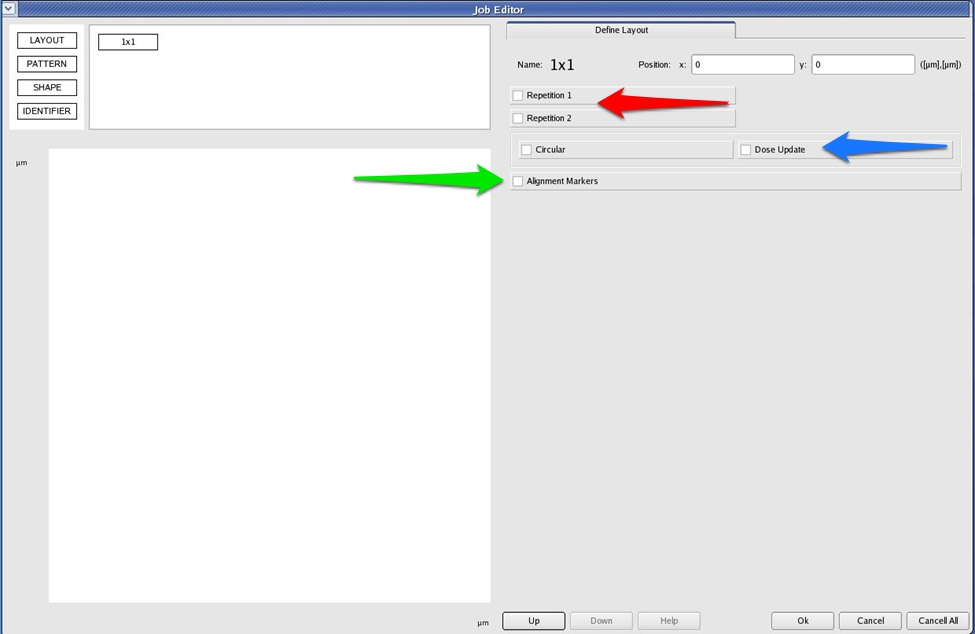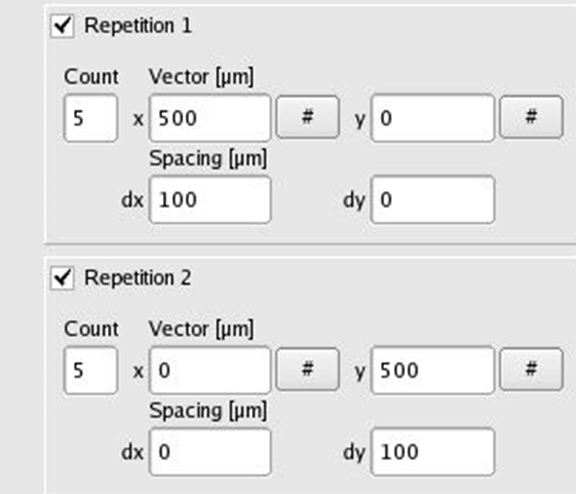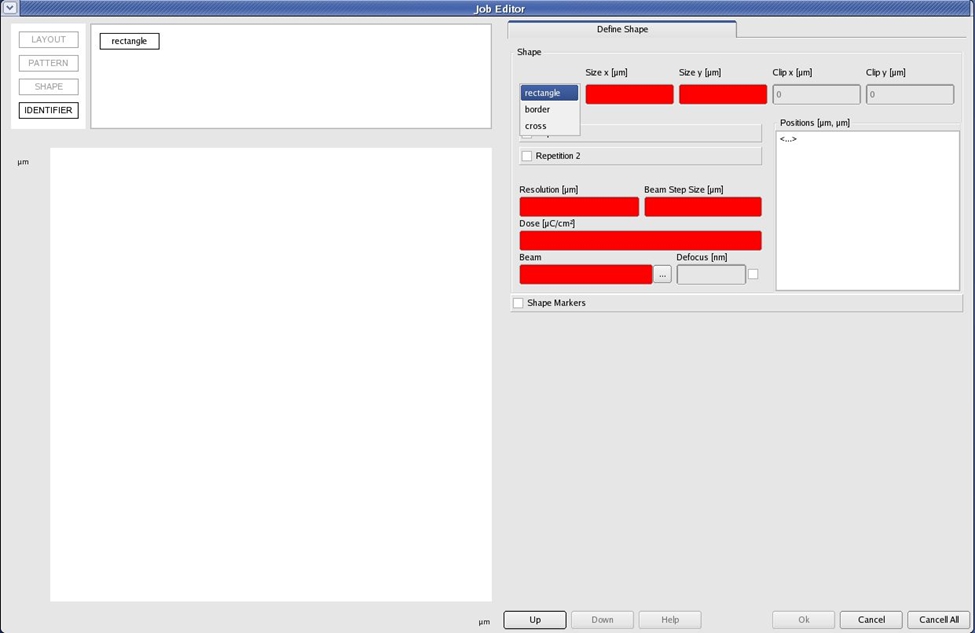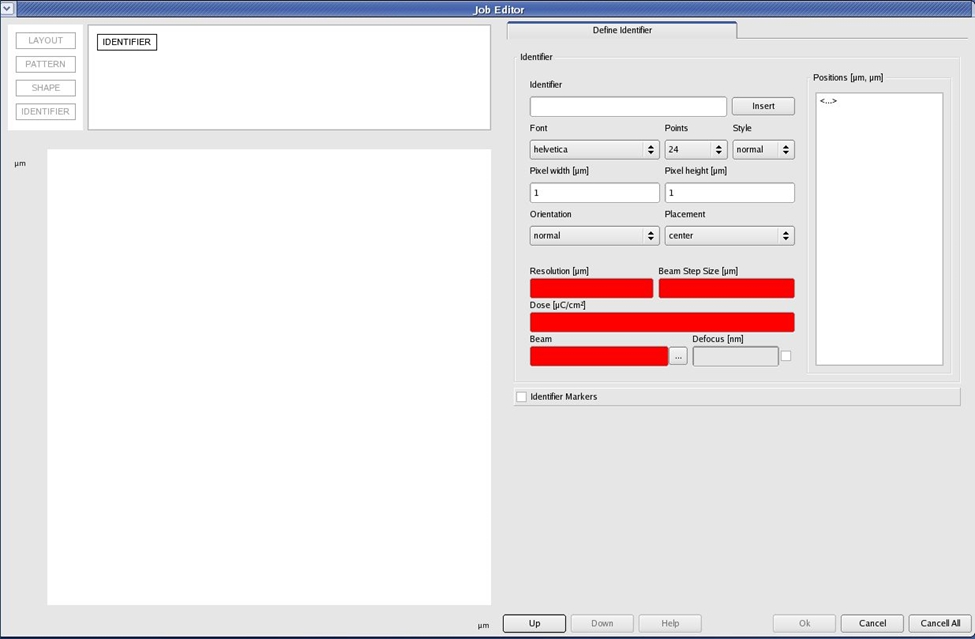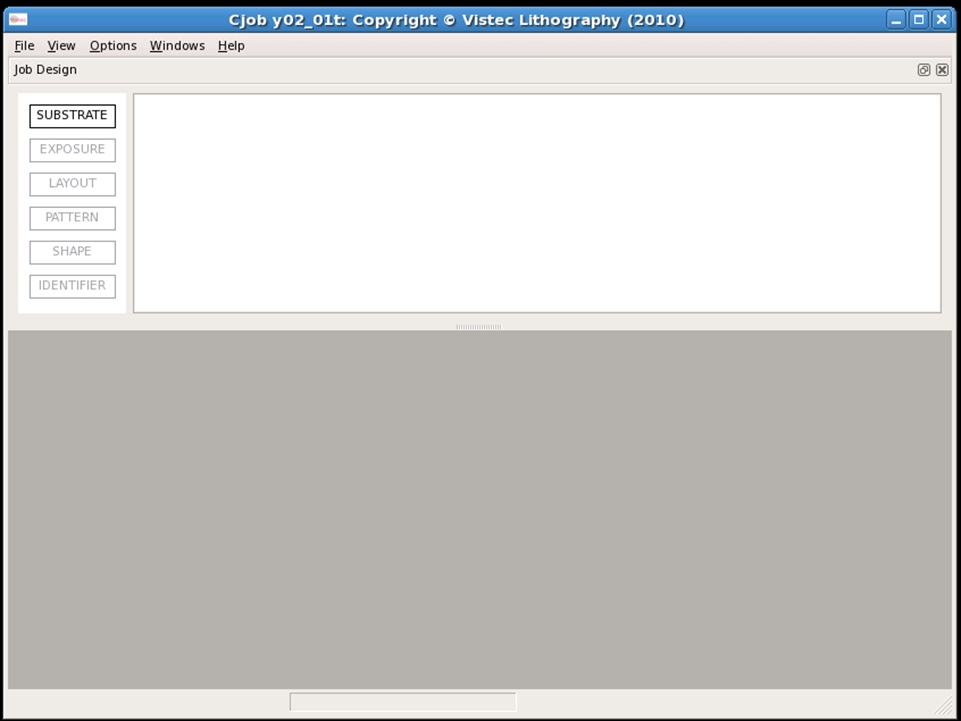
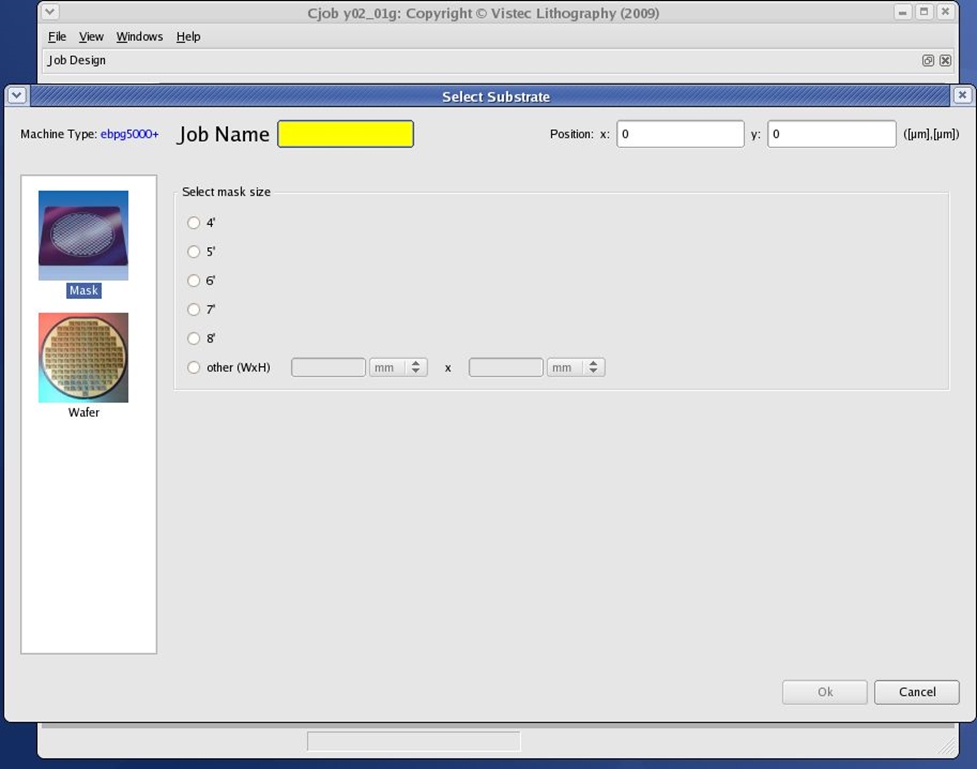
- It is EXTREMELY important not to use a name with spaces in it. CJob will allow it but it will cause an error when you try to execute the job or reopen the .cjob file. All other non-wildcard characters are fine.
- For piece parts, define the substrate as a mask plate with arbitrary dimensions and just enter the height and width in millimeters.

- Each of these objects has specific properties that are discussed later in this guide in more detail
- A completed job flow will consist of a single Substrate object connected to one or more Exposure objects, each of which may have any number of Layout, Pattern, Shape, or Identifier objects connected to it.
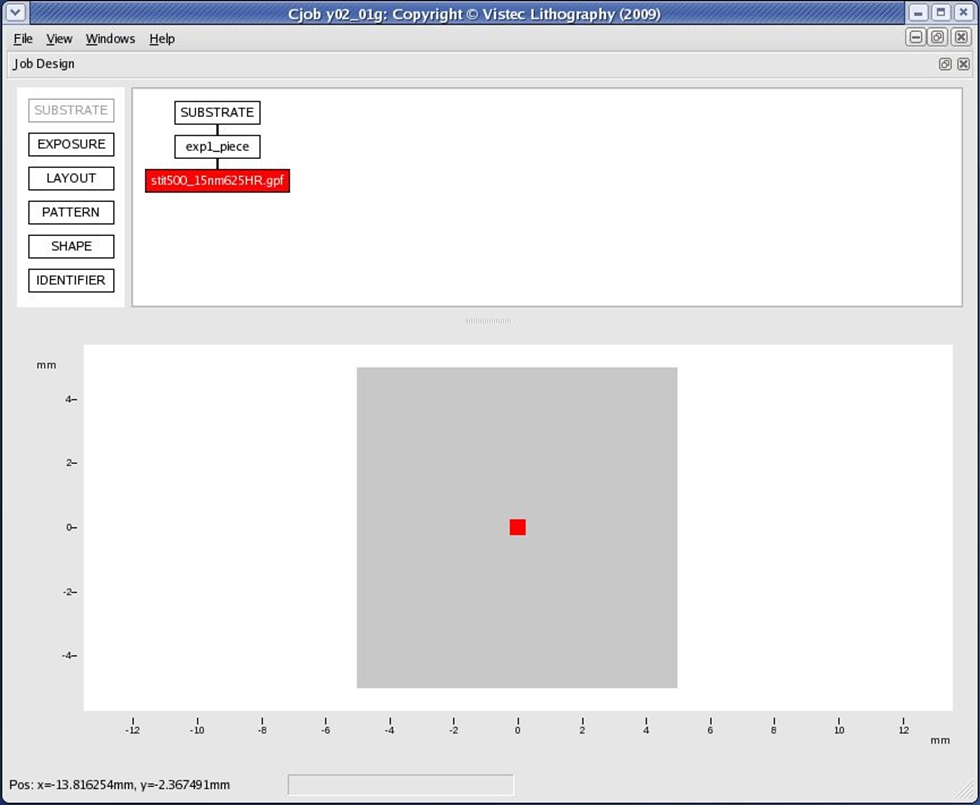
The main window with a simple job flow defined. Here a Substrate object called SUBSTRATE is connected to an Exposure object called exp1_piece, which is connected to a Pattern object containing a GPF file called stit500_15nm625HR.gpf. The substrate, with the pattern in the center of it, is displayed in the lower window.
- The Save Job option will NOT save an executable .job file, just a .cjob file containing the flow you’ve set up in case you want to edit it in CJob later. Files with the .cjob extension can’t be executed and can only be edited with CJob
/jobs subfolder of your home directory. CJob gives exports filenames of the type substratename_exposurename.job by default, but this can be changed to whatever you want.
